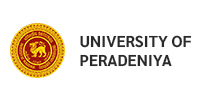
U.A.M.T. Kithsiri
Mapping of eco-geographical distribution of native medicinal plants of Sri Lanka: the basis of study, conservation and utilization.
Duration
Funding Agency
Final Year Student Research
Leader
Investigators
U.A.M.T. Kithsiri, Janaranjana U.G.T.N., Gunawardhena G.M.W.L., De Silva S.H.N.P. and Ranil R.H.G.
Abstract
Among the native flora of Sri Lanka, more than 1,400 plants are used in indigenous
medicine for treating illnesses for over a thousand years. However, due to degradation of
natural vegetation and unsustainable human activities, most of the native medicinal plants
have lost their natural habitats. The commercial cultivation of native medicinal plants is
also restricted to a few species. Though taxonomic information is available, the
distributional ecology of native medicinal plants has not been studied adequately. The
mapping of geographical distribution will provide the basis for study, conservation, and
utilization as well as understanding the cultivation requirements. The based document
was developed referring to 16 volumes of the flora of Ceylon and available checklists for
Sri Lankan plants. It includes 12,450 localities of 983 species of medicinal plants. Based
on that, the distribution pattern of native medicinal plants was mapped using QGIS
software and Arc GIS software. Ten native species were selected based on records of the
Export Development Board. A checklist of native medicinal plants was prepared. The list
consists of 1059 species including 172 endemic species. Distributional maps were
developed for 983 species and endemic species, separately. According to the Average
Nearest Neighbor Analysis, species show clustered distribution patterns, and leading into
hotspots for both native and endemic groups. Giving the Z-Scores; -124.89 and -50.54,
there is a less than 1% likelihood that these clustered patterns of all species and endemic
species could be the result of random chance, respectively. Nearly 58% of species have
been distributed in the Kandy district followed by Ratnapura (36%) and Matale (34%).
The distribution, climatic and soil maps were prepared for ten selected species aiming for
commercial cultivation. The study provides required information for the study,
conservation, and sustainable utilization of native medicinal plant species in Sri Lanka.





